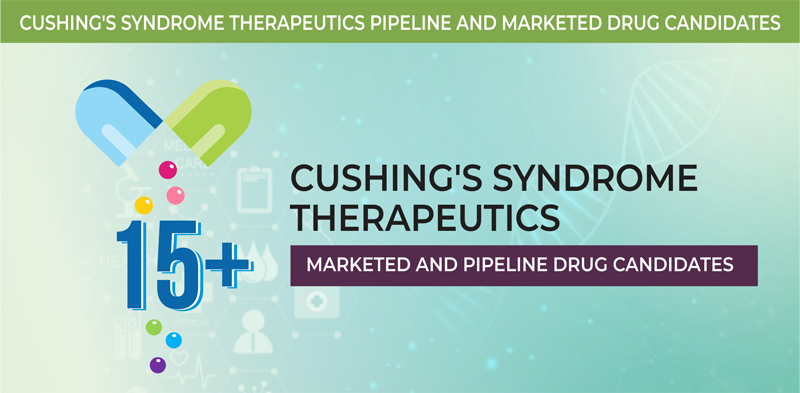
| Report Code: PP10261 | Published: August 2019 | Pages: 250+ | Available format: |
| Therapeutic Area(s): | Others | Report Type: Indication Pipeline Reports |
Overview
Cushing’s syndrome is a result of overproduction of cortisol hormone, which helps to maintain of stress level and blood pressure, regulate blood glucose, and reduce inflammation. In addition, pituitary tumors, adrenal tumors, and ectopic ACTH-producing tumors can also result in increased cortisol level, eventually leading to Cushing’s syndrome. Majorly, the people aged 30–50 years are expected to develop the disease. Moreover, women are comparatively more susceptible to the disease than men.
Weight gain; a fatty hump between shoulders; a round face; wide purple stretch marks mainly on abdomen, breasts, hips, and under the arms; thin arms and legs; easy bruising; weak muscles; and increased fat around the base of neck are some of the common symptoms of the disease. The disease can be diagnosed through 24-hour urinary free-cortisol test, low-dose dexamethasone suppression test (LDDST), late-night salivary cortisol test, and dexamethasone–CRH test.

Cushing’s syndrome can be managed or treated by reducing the use of corticosteroids, surgery, radiation therapy, and medications. A number of drug manufacturers are actively involved in the development of Cushing’s syndrome therapeutics. For instance, Korlym (Corcept Therapeutics Incorporated) and Signifor (Novartis AG) are the two drugs approved by the United States Food and Drug Administration (USFDA) for the treatment of Cushing’s syndrome.
Positive clinical trial results and adoption of collaboration strategies are enhancing Cushing’s syndrome therapeutics pipeline. Moreover, the issuance of patents helps in achieving different milestones in the form of grants and designations from regulatory bodies and institutes, including the USFDA, the European Medicines Agency (EMA), and the National Institutes of Health (NIH).
Pipeline Analysis
As of September 2019, the Cushing’s syndrome therapeutics comprised 15+ marketed and pipeline drugs.
Epidemiology Analysis
The report provides epidemiology forecast of Cushing’s syndrome for seven major markets, such as the U.S., Japan, and EU5 countries (the U.K., Germany, France, Italy, and Spain). It covers prevalent population for the period 2016–2028. According to the American Association of Neurological Surgeons (AANS) 2019 factsheet, approximately 10–15 individuals per million population are affected by Cushing’s syndrome, globally. Moreover, Cushing’s syndrome majorly affects adults aged 20–50 years, and is more common in females, accounting for approximately 70% of all cases.
Competitive Landscape
Novartis AG, AstraZeneca PLC, Diurnal Group PLC, Corcept Therapeutics Incorporated, Crinetics Pharmaceuticals Inc., Strongbridge Biopharma plc, and Spruce Biosciences Inc. are some of the companies developing therapeutics for Cushing’s syndrome.
Report Insights
Some highlights of the report “Cushing’s Syndrome Therapeutics – Pipeline Analysis 2019, Clinical Trials and Results, Patents, Designations, Collaborations, and Other Developments” have been mentioned below: